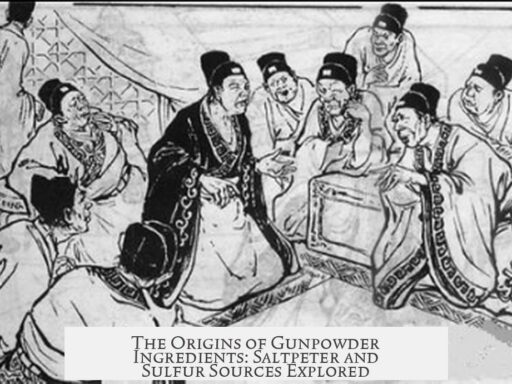The idea that European traders had nothing the Chinese wanted except gold and silver oversimplifies complex trade dynamics. Europeans did bring exotic Southeast Asian goods like pepper and ivory to China but shifted focus to silver due to China’s exceptional demand for it. They did not simply export SEA goods directly to China because silver enabled more profitable, flexible trade involving multiple ports and goods.
European traders, particularly the Portuguese in the 16th century, entered Asian trade networks with cargoes dominated by exotic goods such as pepper and ivory from Southeast Asia. Pepper, mostly sourced from the region, was a major commodity. At one point, the Portuguese shipped about 30,000 quintals of pepper yearly to China, matching volumes sent to Europe. Yet, by the late 16th century, silver replaced these goods as the main trade medium.
China’s robust demand for silver created a unique trading leverage. Silver commanded excellent prices within China and was exchanged primarily for Chinese silks and gold. This trade pattern was so strong that China, paradoxically, exported gold driven by the favorable silver-to-gold exchange ratio distinct from global values. Thus, silver was not just money but a key trade good.
The Portuguese established a complex, highly profitable trade route linking Goa, Malacca (a Southeast Asian port under Portuguese control), Macau, Japan, and back to China. This circuit capitalized on the comparative advantages of various regions. Ships carried silver and Indian Ocean goods like ivory, pepper, and slaves to Macau and China, traded silks and gold for silver in Japan, and returned laden with valuable Chinese products to be re-exported or sold locally. Trips could last 18 to 30 months, producing large profits.
| Port/Region | Goods and Role |
|---|---|
| Goa | Starting point with silver and Indian Ocean goods |
| Malacca | Southeast Asian goods supply (pepper, ivory) |
| Macau | Gateway to China; exchange with Chinese goods |
| Japan (Nagasaki) | Exchange silks & gold for silver |
Simple direct transport of Southeast Asian exotic goods to China was not the most efficient or profitable strategy for traders. Several factors contributed:
- Price and quality considerations: Many European and Southeast Asian goods were too costly or lacked competitive quality relative to local Chinese products. This lowered demand despite their exotic nature.
- Role of silver: Silver’s fungibility, intrinsic value, and demand made it a universal medium that simplified large-scale trade, enabling complex multi-step exchanges instead of straightforward commodity shipments.
- Trade network complexity: The system involved moving goods through multiple ports to optimize profits and meet diverse market demands rather than a direct route from Southeast Asia to China.
Even after the Portuguese were expelled from Japan in the 17th century, the trade routes adapted. Portuguese traders sourced silver from other locations and introduced sandalwood from Timor as a novel import to maintain their trading advantages. This flexibility illustrates the essential nature of silver and strategic goods, not just Southeast Asian exotic goods, in sustaining trade with China.
Local Southeast Asian sources were maximized, yet silver’s demand and versatility largely determined trade patterns. Trade favored movable wealth that could be exchanged quickly for local desirable commodities like silk and gold, which had high value in international markets, including Japan and India. This strategy ensured profits far exceeding what a simple direct exotic goods shipment could yield.
In summary, the idea that European traders had “nothing China wanted except silver and gold” overlooks the complexities of demand, pricing, and strategic trade routes. Europeans initially traded Southeast Asian products but shifted focus to silver because it met China’s high demand and enabled a profitable triangular trade system linking multiple ports and goods.
- European traders initially traded Southeast Asian goods (pepper, ivory) to China but shifted to silver due to China’s strong demand.
- Silver facilitated complex trade routes linking Goa, Malacca, Macau, Japan, and China with high profits over multi-year voyages.
- Direct shipment of exotic SEA goods to China was less profitable compared to multi-stage trade using silver.
- Price and quality made many imported goods expensive compared to local Chinese products, limiting demand.
- Even after losing access to Japan, Portuguese adapted by sourcing silver elsewhere and adding other trade goods like sandalwood.
Why Didn’t Europeans Just Take Exotic Southeast Asian Goods to China in Trade?
It’s often repeated that when European traders reached China, they had “nothing the Chinese wanted,” except for gold and silver. But wait a minute—China had been trading with Southeast Asia (SEA) for centuries, and those regions were now largely under European colonial control. So why didn’t the Europeans simply grab those exotic goods from SEA and ferry them to China to trade? The answer isn’t as simple as it sounds. Let’s unpack this fascinating economic puzzle.
The “Nothing They Wanted” Phrase: A Misconception
First off, the idea that Europeans offered “nothing the Chinese wanted” is a bit of a myth. It’s not that the Chinese didn’t want European or Southeast Asian goods. The demand depended heavily on quality and price. Many items brought by Europeans were either too expensive or similar to local options. Imagine if you were offered a fancy wine at triple the price of your homebrew—it’s no surprise you’d say no thanks!
Why were European goods more expensive? The reasons are many. Raw material costs varied. Labor expenses differed. Plus, shipping across oceans added hefty transportation costs. Scholars continue digging into exactly why prices differed so much, but the full picture is still murky.
Portuguese Trade in the 16th Century: Pepper, Ivory, and Then Silver
Portuguese traders did bring exotic goods but not always the kind you might expect. In the early 1500s, their main cargos to China included pepper and ivory. Interestingly, most pepper they shipped to China came from Southeast Asia—not India, which mainly supplied Europe.
In 1554, reports say Portuguese shipped 30,000 quintals of pepper to China, matching the volume sent back to Europe. That’s quite a lot! This goes against the idea Europeans had no goods valued by the Chinese—pepper was clearly in demand.
However, by the late 1500s, pepper lost its place in cargoes. Another player took over: silver. Specifically, silver from Japan became king. Silver’s rise wasn’t because Chinese buyers suddenly disliked exotic goods. Rather, silver fetched incredibly high prices in China. It was exchanged for Chinese silk and even gold, making it central to the trade.
Here’s a fun twist: China was actually exporting gold at this time because the silver-to-gold exchange ratio in China was skewed towards silver being more valuable there than anywhere else. Talk about a complex currency dance!
The Portuguese Trade Route: A Clever Triangular Voyage
The Portuguese didn’t just drop goods in China. They ran a smooth, annual trade route starting in Goa (India), passing through Malacca (Southeast Asia), then on to Macau near China. On board? Silver, plus some Indian Ocean goods like ivory and pepper, some European wines, olive oil, and textiles such as wool or velvet.
From Macau, the Portuguese sailed to Nagasaki in Japan, where they traded silks and gold for silver. Then back to China, exchanging that silver for silk and other goods to sell or send back to India. This triangular route lasted a long 18 to 30 months, but profits were huge. That’s a long haul for some serious payoffs!
Even after the Portuguese were expelled from Japan in the 17th century, they adapted. They found silver sources elsewhere and added new imports like sandalwood from Timor.
Why Not Just Use Southeast Asian Goods to Trade in China?
Southeast Asian goods did play a role, but they weren’t the silver bullet for trade issues. Europeans used local sources as much as possible. But the demand and value of silver in China simplified trade and dominated economics. Silver was universally desired and easy to value, solving many trade headaches.
Besides, the Chinese market was complex. Exotic goods were often produced locally or available via long-standing regional trade networks at competitive prices. European traders faced stiff competition, and instead of trying to overwrite centuries of regional commerce, they leveraged their unique assets—like access to massive silver supplies.
What Can Modern Traders Learn From This?
Trade is never just about having something “exotic” or “rare.” Price, quality, and local demand rules the game. Successful traders find what is scarce in one place but sorely needed elsewhere—and exchange it smartly. Europeans managed to profit by understanding that silver was the missing puzzle piece for China’s market, not just by hauling exotic goods.
So, next time you hear “nothing the Chinese wanted,” remember—it’s not about a total lack of desirable goods. It’s about economics, value, and clever strategy. Just like in modern markets, the currency—the “silver” of today’s digital age—makes all the difference.
Summary Table: Key Points on European Trade Goods and Strategy
| Aspect | Details |
|---|---|
| European Goods to China | Pepper, ivory, some textiles, wine, olive oil initially; shifted to silver as dominant trade good |
| Role of Southeast Asia (SEA) | Source for pepper, ivory, and locally produced goods; under Portuguese/Macanese control |
| Why Not Just Exotic SEA Goods? | Prices too high, competition with local goods, complexity of regional trade networks |
| Silver’s Importance | Highly demanded in China, simplified valuation, exchanged for Chinese silks and gold |
| Trade Route | Goa → Malacca → Macau → Nagasaki → Macau → Return; 18-30 months per cycle |
| Adaptation | Continued trade after expulsion from Japan; added sandalwood and alternate silver sources |
In sum, the Europeans didn’t just carry exotic SEA goods on a whim. They pursued a carefully crafted strategy centering on silver’s value in China, working within an already sophisticated regional trade ecosystem. Trade isn’t just what you have but how the market values it. And in 16th-century Asia, money—in the form of silver—talked loudest.


